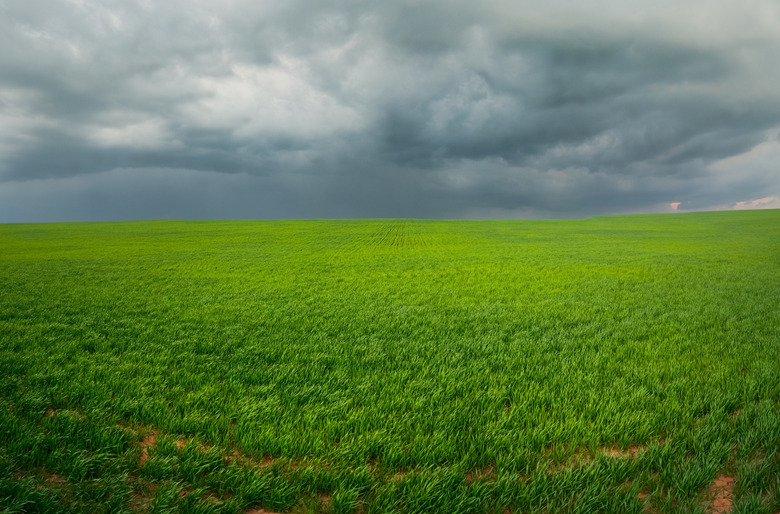Homemade Grass Dye
Grass dye has been used to color grass and fix visual imperfections of a lawn since the 1950s when it was used to dye grass for Hollywood movie sets and golf courses. The practice of dyeing grass has become more common as it becomes a cheaper alternative to spending money over-seeding, fertilizing, watering and replacing lawn patches. Create your own lawn dye by mixing several different plant nutrients and food coloring.
Reasons for Homemade Grass Dye
Reasons for Homemade Grass Dye
If you're living in a neighborhood with a powerful Home Owner's Association (HOA), you may have been threatened with fines for a yard with dead patches. Even if you try reseeding the patch and watering more, it will still take time for new grass to grow and you may be fined by the day until grass is green. Grass dye is a cheap quick fix to keep the HOA satisfied and save money and time. Homemade grass dye can be even cheaper than a store-bought bottle and most ingredients for it are found around the house. Another reason grass dye has become necessary for some homeowners is drought-related watering restrictions. Some types of grass cannot get the amount of water they need because of watering restrictions.
Benefits of Homemade Grass Dye
Benefits of Homemade Grass Dye
Homemade grass dye can save a chunk of money spent on grass seed, overwatering of new seeds, fertilizing of new seeds, pesticides and even the high cost of having a grass paint service. Rather than constantly trying to replace grass that died from drought or cold weather, dye grass green yourself by pouring dye into a sprayer attachment and attaching it to a garden hose until the season permits natural regrowth. One application of lawn dye can last for months and food coloring will not harm plants. The paint is nontoxic so it is not harmful to people or animals either, and it coats the grass, helping to protect it from both hot and cold temperatures.
Ingredients Used for Homemade Grass Dye
Ingredients Used for Homemade Grass Dye
Homemade grass dye is inexpensive to make. Mix one pound of liquid fertilizer together with four pounds of Epsom salt and 1/4 cup of green food coloring. This should cover a small to medium yard, depending on how heavily you coat the grass. The fertilizer and Epsom salt help add nutrients to the grass so that it turns green naturally. Epsom salt replenishes magnesium and iron in plants, which increases the production of chlorophyll in plants that lack these elements. However, if your soil is well balanced in nutrients, Epsom salt is not a necessary or healthy additive. Replace Epsom salt with water, because the green food coloring is what will be essentially dyeing the grass. Green food coloring is nontoxic and can tint the outer layer of plants green. When the grass absorbs the food coloring it will become the color of the food coloring without harming the plant. Use caution when applying: green food coloring will not only dye the grass, but hands, pavement, wood fencing and paving stones as well. Wear gloves and make sure the dye is applied only to the lawn.
As an option to using food coloring, which may not give your lawn a natural green shade, use a commercial product called a "turf colorant," which is available in different, natural shades of turfgrass green. Typically, the colorant is diluted at the rate of 1 part colorant to 10 parts water.
Controversy and Grass Dye
Controversy and Grass Dye
Some people argue that dyeing grass is giving in to unnatural expectations rather than tending to a lawn naturally. If they are unaware of the nontoxic ingredients used in homemade grass dye, they may disapprove of dyeing methods because they think chemicals are soaking into the ground. Others tend to trust a professional lawn service more than homemade treatments. And, to some homeowners, making grass dye and dyeing grass with food coloring is the easy way out — or may even be considered lazy. So some folks just don't tell how they keep their grass green.
